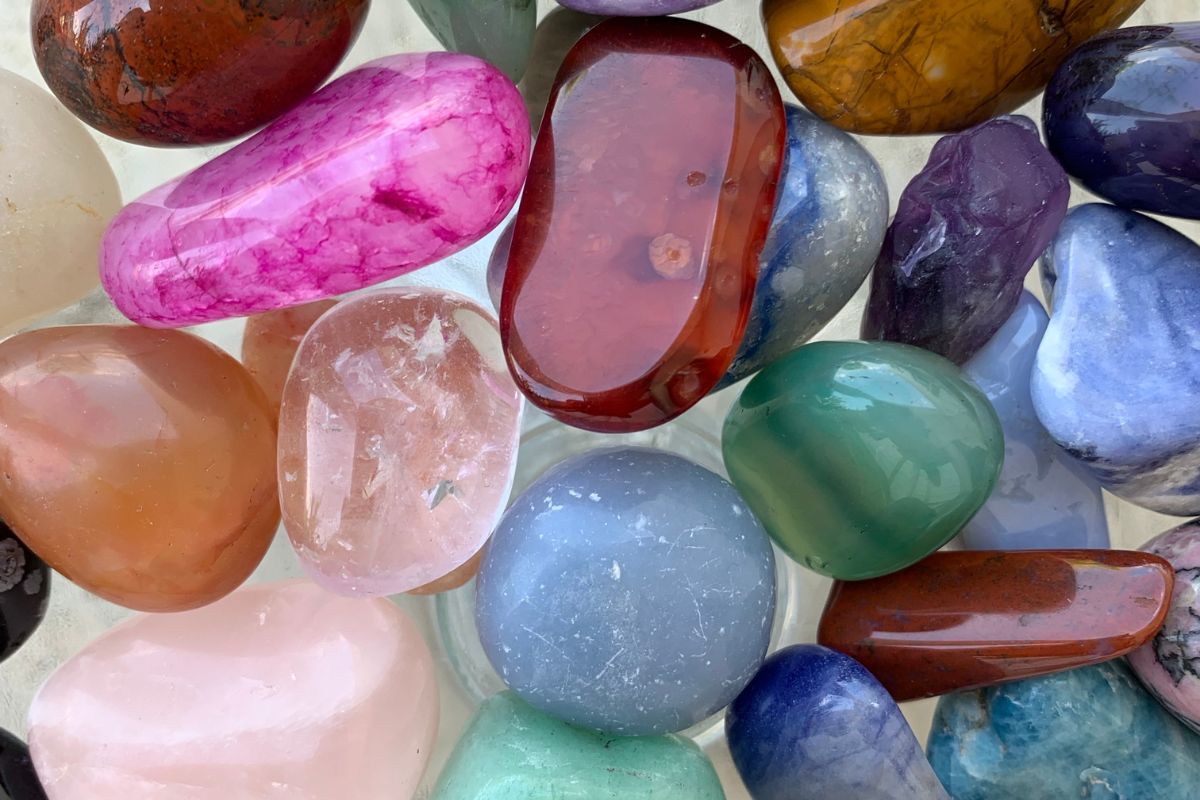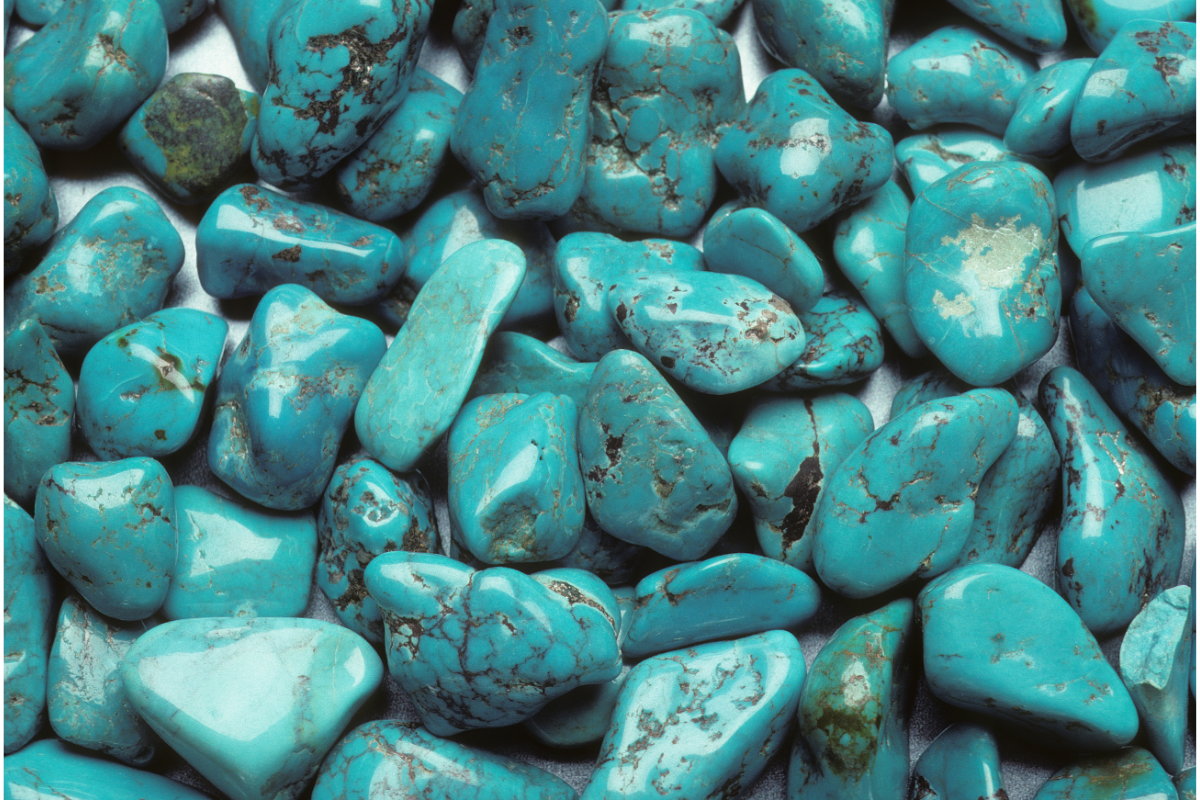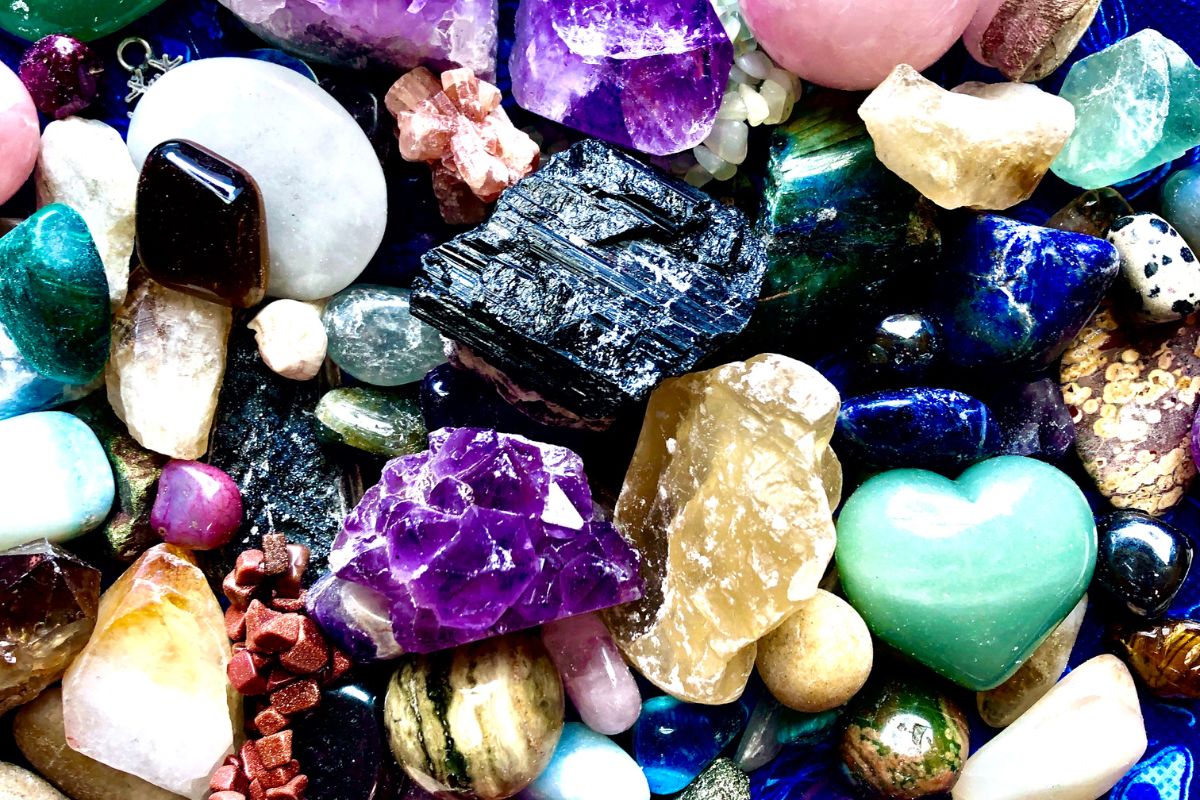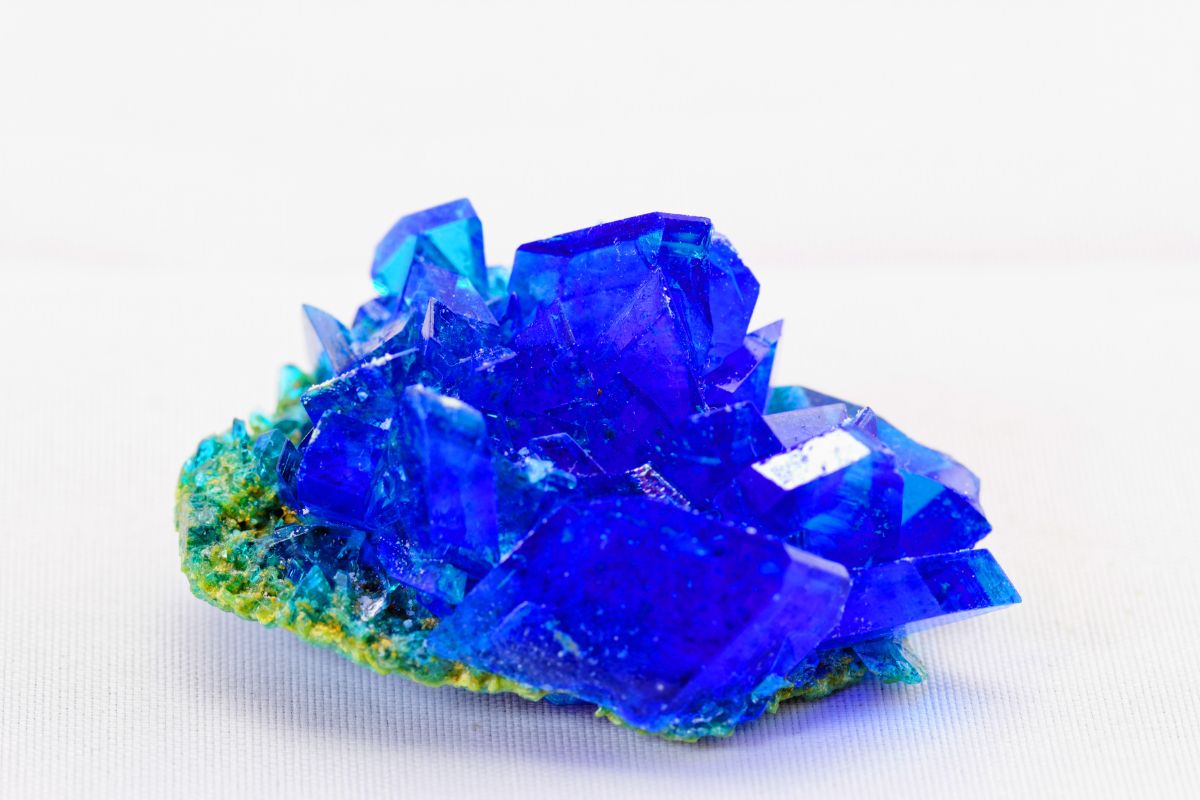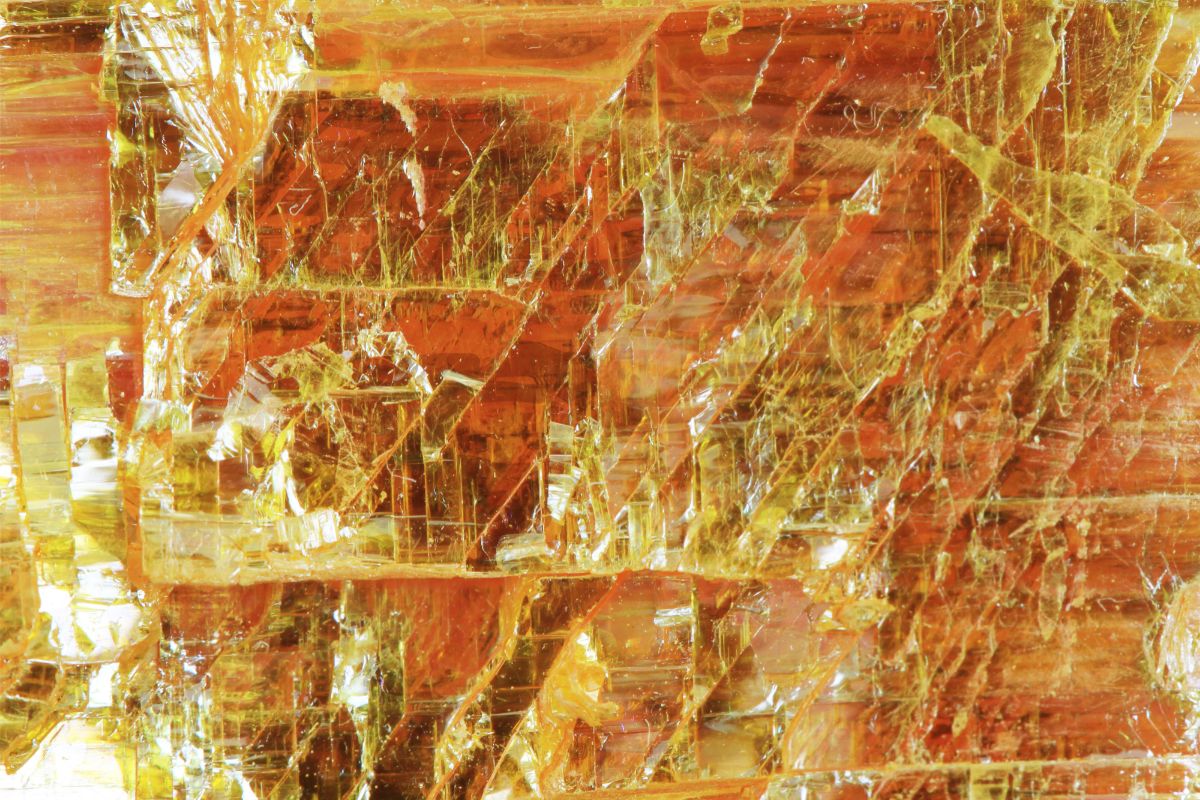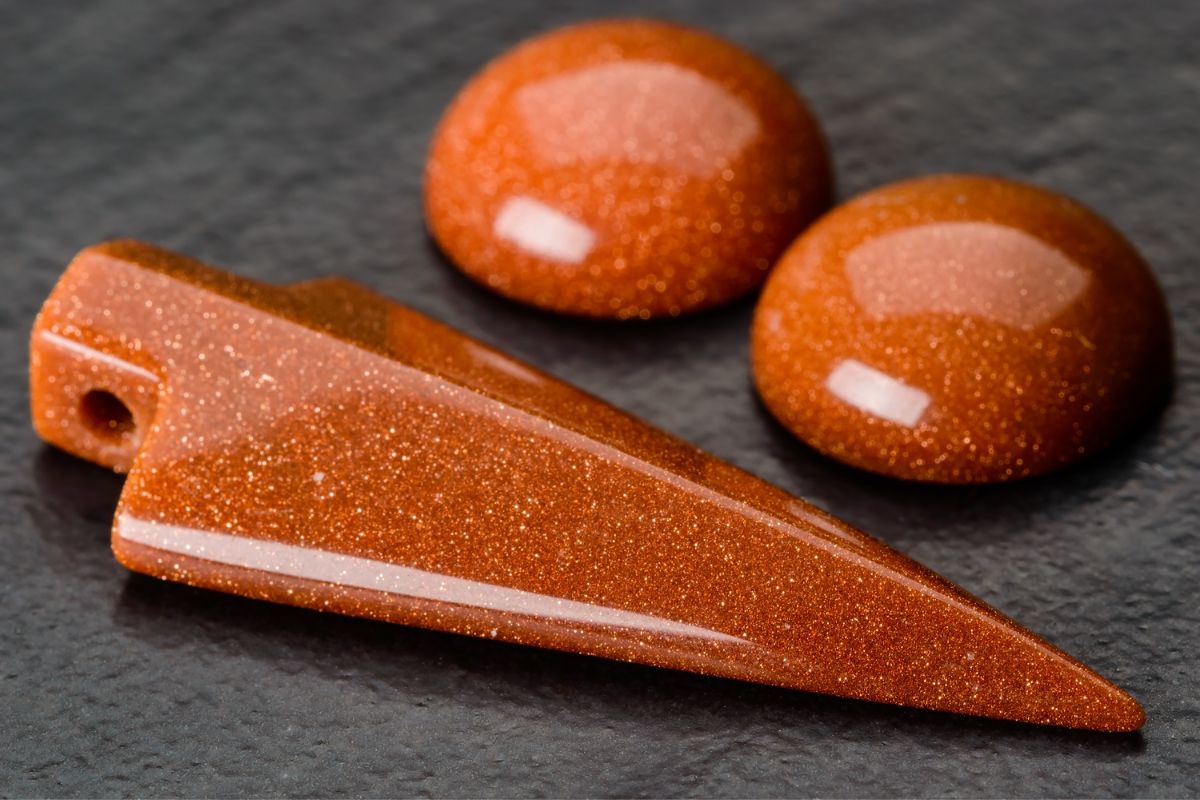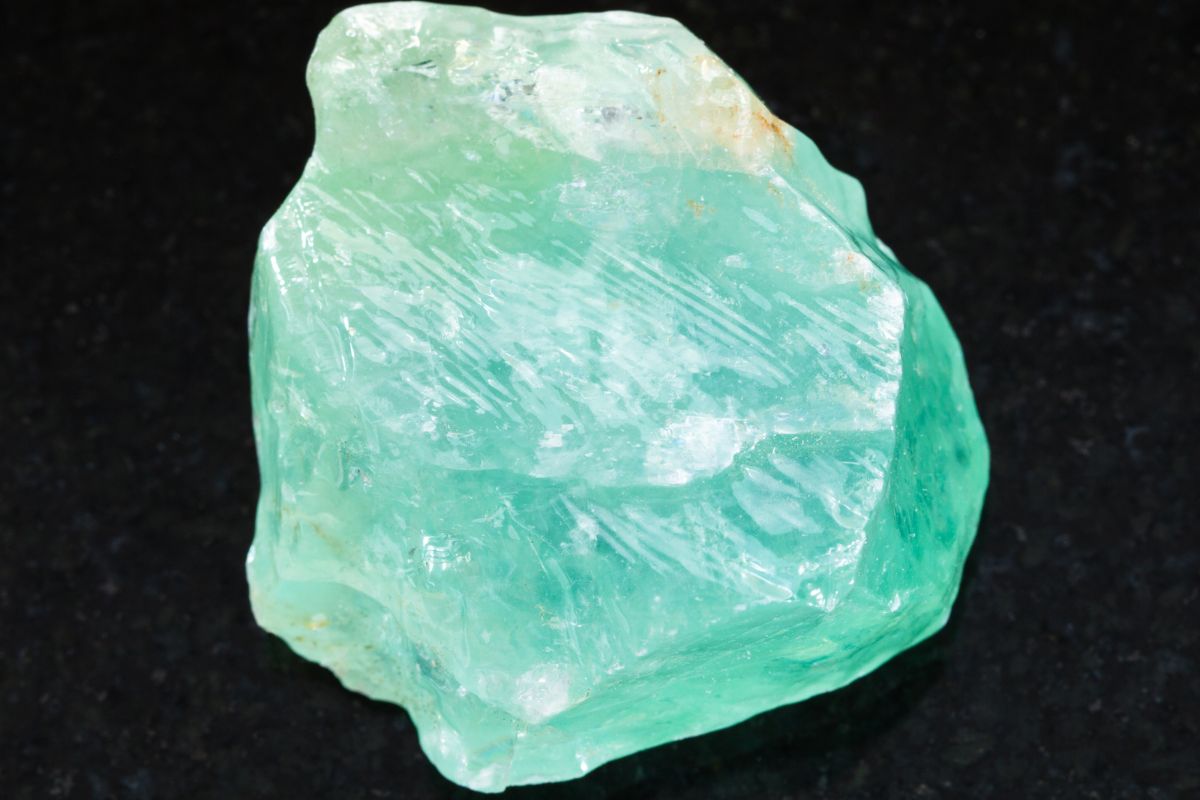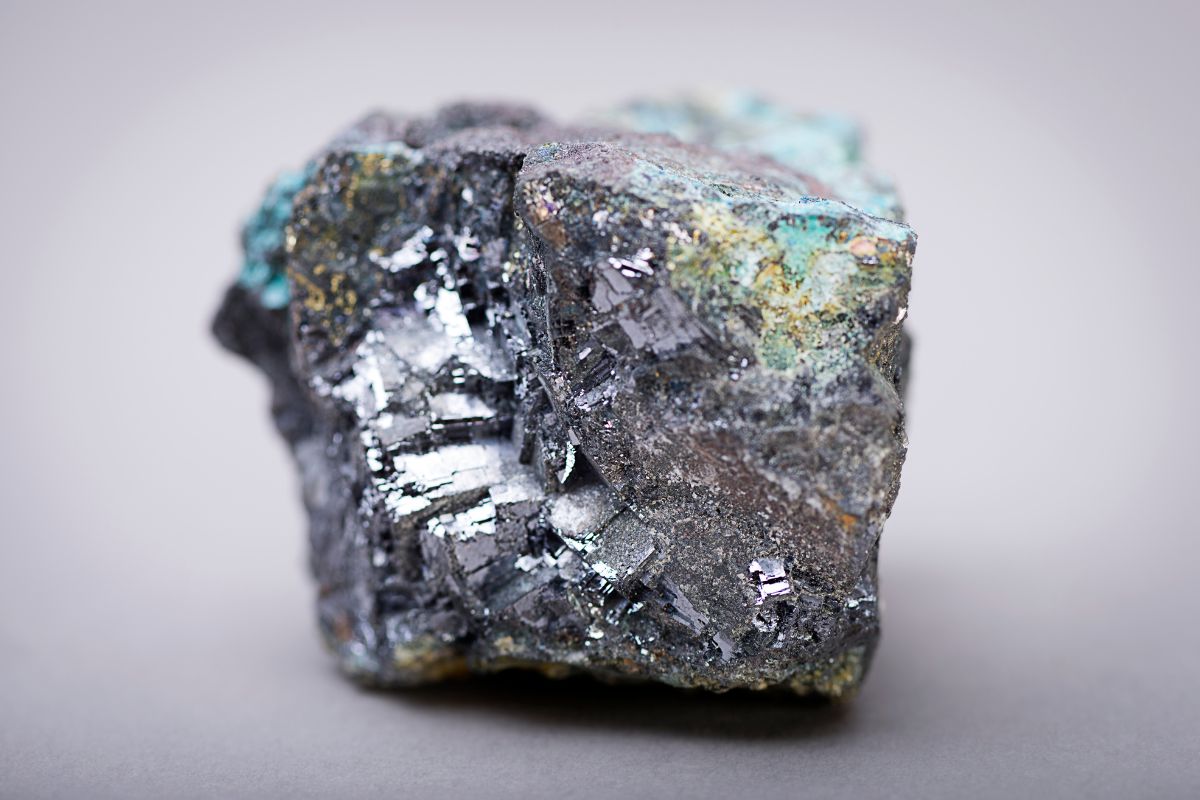Lapis lazuli is a beautiful deep blue semi-precious stone that has been prized for thousands of years.
Its rich color ranges from deep ultramarine to azure blue, often with sparkling flecks of gold pyrite running through it.
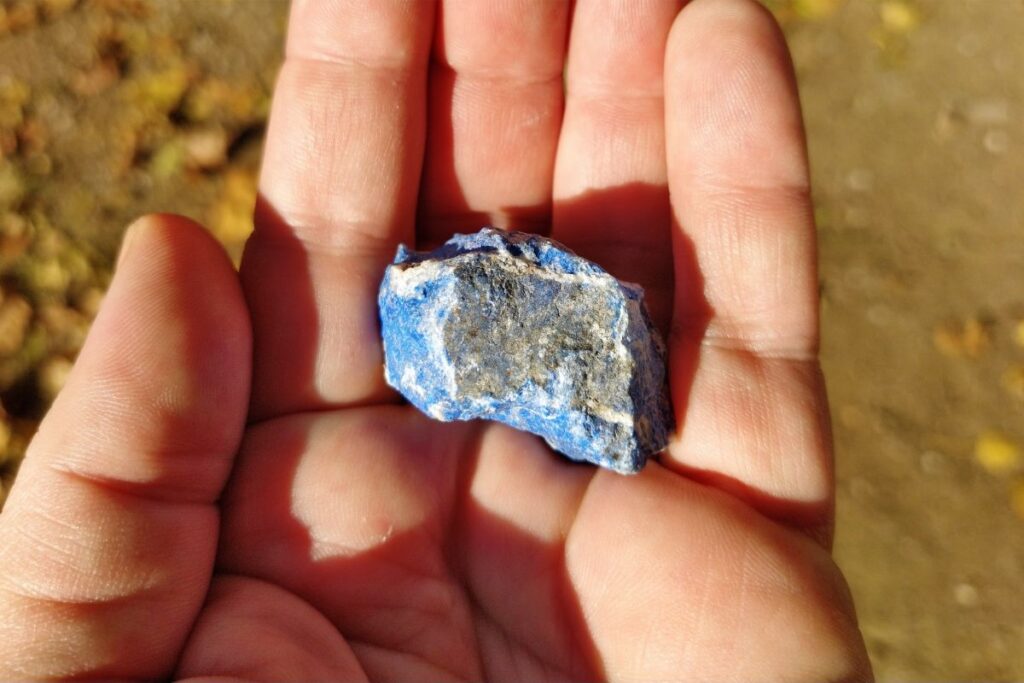
Lapis lazuli has a long history of being used to create jewelry, carvings, and ornamental objects going back to ancient Egypt, Mesopotamia, China, and beyond.
But is it safe to touch this striking gemstone?
In this guide, we’ll take a look at some key considerations for handling lapis lazuli:
Can You Touch Lapis Lazuli
Some crystals are toxic and are, therefore, dangerous to handle, but is this true of lapis lazuli?
The answer is a little complex, and there are several factors that we will need to consider in this article.
If lapis lazuli is polished and tumbled, then, yes, it is safe to touch.
However, if the lapis lazuli is in its raw, unpolished form, it’s essential to exercise caution.
Lapis lazuli is primarily composed of lazurite, calcite, and pyrite, which are generally considered safe to handle.
Some variations, however, can contain trace amounts of other minerals, such as sulfur, or even toxic elements like lead.
Pyrite itself is not inherently toxic when touched; it primarily consists of iron and sulfur.
However, if pyrite is exposed to moisture and oxygen over time, it can form sulfuric acid, which could be a concern in specific environmental conditions, but generally, this is not a significant risk when it comes to handling pyrite or pyrite-containing rocks like lapis lazuli.
Handling raw lapis lazuli occasionally is generally considered safe, but if you’re going to be handling it frequently or for extended periods, it’s a good idea to wear gloves as a precaution.
Additionally, lapis lazuli dust should not be inhaled. If you are cutting or grinding the stone, it’s essential to wear a protective mask and work in a well-ventilated area. The dust from lapis lazuli is not safe to inhale and could lead to respiratory issues.
Lastly, it is crucial to consider how the lapis lazuli will be used. If it’s going to be used in jewelry that comes into constant contact with the skin, it’s advisable to use polished stones.
Polished lapis lazuli is also recommended for any sort of healing or metaphysical work.
Understanding The Composition Of Lapis Lazuli
To fully understand how safe lapis lazuli is to handle, we need to look at its composition:
Chemical Composition
As mentioned, Lapis lazuli is composed mainly of lazurite, sodalite, and calcite. It also frequently contains pyrite, which gives it its sparkly gold flecks.
Hardness Level
On the Mohs hardness scale, which measures a mineral’s resistance to scratching, lapis lazuli ranks at around 5 to 5.5.
This means it is relatively soft compared to harder gems like diamonds (10) or rubies and sapphires (9).
While soft enough to be carved into jewelry and other artifacts, lapis is still hard and dense enough that facial contact like rubbing won’t cause pigment to come off on the skin.
The compact crystalline structure of lapis lazuli makes it stable against chipping or flaking during handling.
Friability And Fractures
While lapis lazuli is not prone to chipping or flaking due to its hardness, lower-quality specimens with high quantities of calcite may contain flaws or fractures that make them more fragile.
Any such weak spots or fissures could potentially lead to small chips coming off if handled roughly.
Carefully inspecting lapis lazuli prior to use and avoiding any pieces with existing cracks or flaws is advised.
Also, taking care not to subject lapis jewelry or carvings to sharp blows or intense pressure can help maintain their integrity when worn or displayed.
Pigments And Dyes
The concern that touching lapis lazuli will leave blue pigment residue on the hands is understandable, given its intensely saturated color.
However, high-quality lapis lazuli that has not been treated or dyed is typically colorfast and will not rub off onto the skin.
The blue hues come from the lazurite mineral naturally present in lapis, not artificial dyes or pigments.
Health Hazards
There are no known health hazards associated specifically with handling lapis lazuli.
As a naturally occurring metamorphic rock, direct skin contact does not pose toxicity risks or cause allergic reactions in most people.
Lapis also does not emit radiation or other potentially dangerous emissions.
Of course, basic hygienic practices should be employed, like washing hands after handling any minerals or jewelry to remove any accumulated dirt or debris. This helps prevent potential eye or mouth contamination.
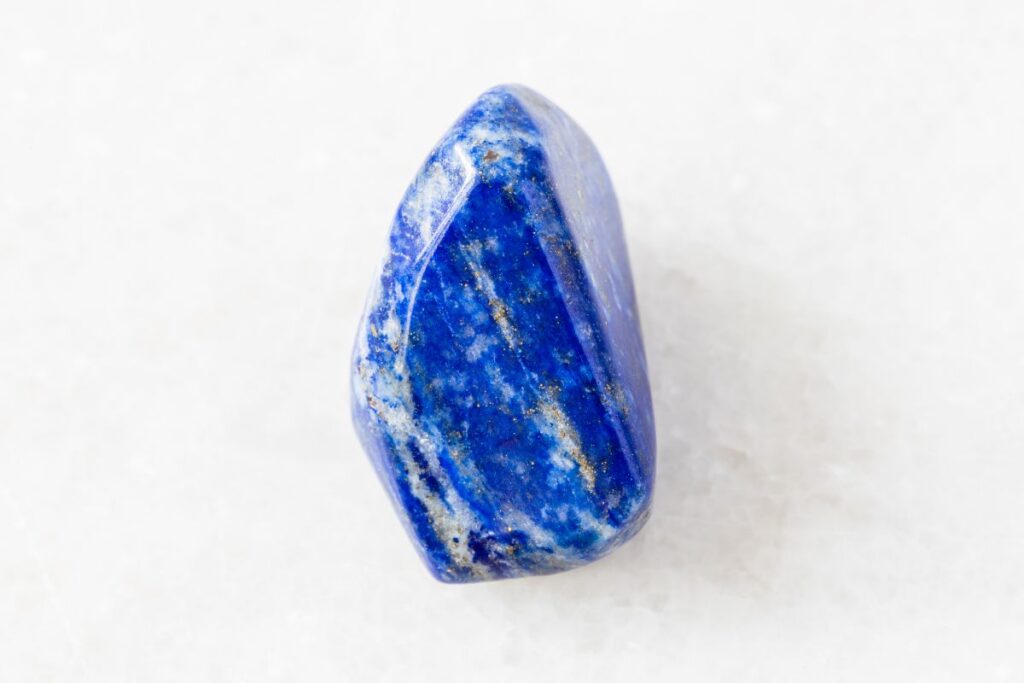
Things To Consider When Working With Lapis Lazuli
Jewelry Cleaning
Take care when cleaning lapis lazuli jewelry to prevent damaging the relatively soft stone.
Avoid using ultrasonic or steam cleaners, heat, or harsh chemicals. Simple warm water with mild soap and a soft brush is best for routine cleaning. Blot dry with a soft cloth.
Repeated cleaning over time may gradually strip away any sealants or dye, so minimize cleaning frequency on lower-quality lapis that could be treated or dyed.
Take off lapis jewelry before exercising, cleaning, or engaging in rough activities.
Storage
Storing lapis lazuli safely means preventing scratches, chips, and fractures.
Wrap stones or jewelry in soft materials like felt bags or tissue paper when not in use.
Use compartmentalized storage boxes to keep lapis pieces separate and cushioned.
Keep lapis away from other harder gems or metals that could potentially scratch the relatively soft surface if they made contact.
Avoid direct sunlight over prolonged periods, which can potentially cause fading, and keep lapis in cool, dry conditions to prevent damage from moisture or temperature extremes.
Summary
Lapis lazuli is generally considered to be safe to touch and handle.
This blue crystal has survived for thousands of years thanks to its exceptional durability. But taking basic precautions helps ensure this ancient gemstone remains safe to handle and touch.
Examining pieces for any visible flaws, avoiding inferior quality or treated lapis, and preventing sharp impacts or extreme pressure will allow the enjoyment of lapis while minimizing risks of damage.
- 15 Crystals That Cannot Be Exposed To The Sun - January 7, 2024
- Malachite Vs Fuchsite – Benefits And Uses - January 7, 2024
- Malachite Vs. Green Jasper: Benefits And Uses - January 7, 2024



